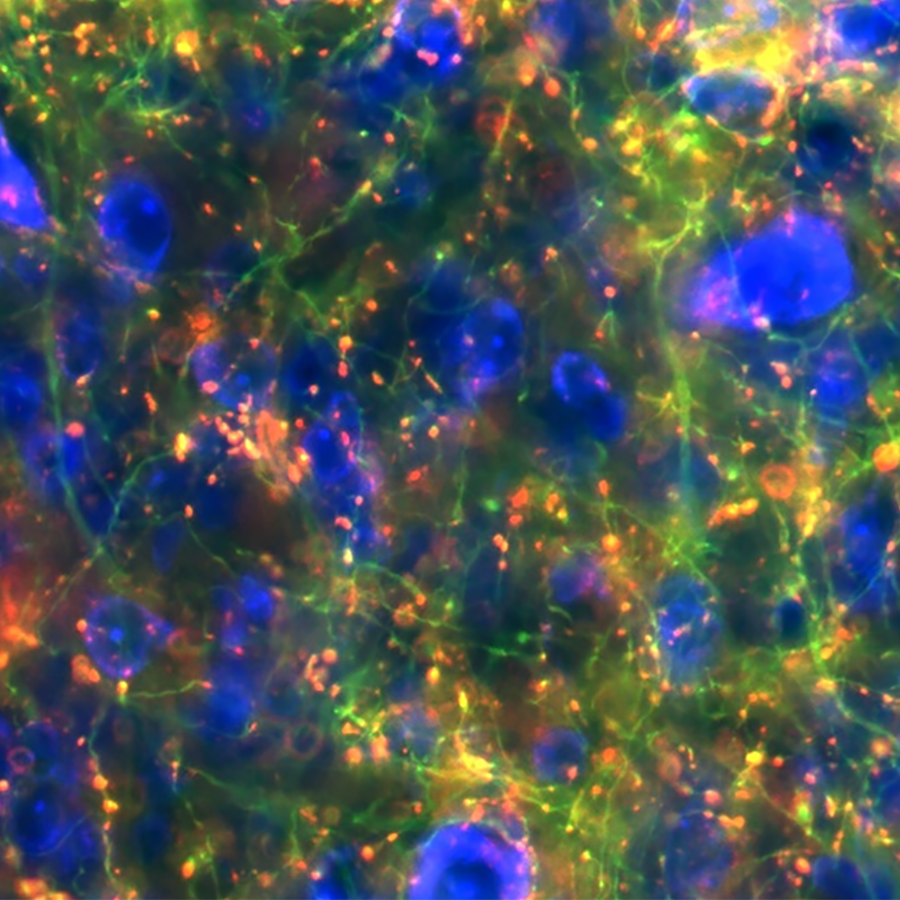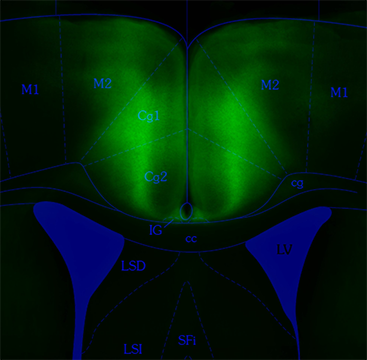NEW YORK – From an athlete competing in the Olympics to a painter absorbed in their art, we’ve all experienced what it feels like to be “in the zone”: that intense focus, that drive to do something we’re good at.
Now, scientists studying mice may have uncovered some of the neurological magic that flips this switch. New research published July 23 in Science Advances suggests that a sustained buildup of dopamine, a natural chemical in the brain, drives focused flurries of activity.
“We can now describe the neurochemical basis of being in the zone,” said first author on the new paper Aaron Koralek, PhD, a postdoctoral researcher in the Costa lab at Columbia’s Zuckerman Institute. “A mouse’s brain contains motivational cells, cells that release dopamine and spark bursts of doing something the animal has learned how to do well.”
This discovery could have significant implications for diseases linked to dopamine deficits, from depression to addiction to schizophrenia. Parkinson’s, for instance, is commonly treated by elevating dopamine levels. But such interventions can alter a person’s behavior in negative ways.
“Sustained dopamine levels change the motivation to perform a learned action,” said Rui Costa, DVM, PhD, last author on the paper and CEO and director of Columbia’s Zuckerman Institute. “But elevating dopamine levels, as in treatments for Parkinson’s disease, can lead you to do the same action over and over again, and even to compulsive gambling. Understanding how that happens in the brain could be key to improving treatments.”
The team also found that norepinephrine, a second chemical in the brain closely related to adrenaline, can turn the switch off and trigger a desire to try something new instead of repeating a familiar action. The balance between these two chemical systems therefore appears to tune our ongoing behavior between these extremes of focused motivation and open exploration.
The Games that Mice Play
To study these states of mind, the researchers created a game for mice. An animal saw three holes. If it poked its nose into the openings in the right order, it got a treat.
At first, mice playing the game explored different hole combinations. After discovering the correct pattern, their behavior changed. They started using it to get a reward, instead of trying other combinations.
After mice figured out the game, their brain activity changed. Cells perked up in the substantia nigra pars compacta, a brain region associated with reward and movement – and Parkinson’s disease. These cells, which release the neurotransmitter dopamine, could have been simply rewarding the animal for playing the game well, something dopamine cells are known to do.
But when the scientists took a closer look, they found something else at work. A mouse that learned the task would sometimes choose to play over and over again, like a gamer spending hours on their PlayStation. During these intense periods, when the animal entered a state of vigorously poking its nose into the holes, its dopamine levels built up and stayed high for many seconds.
At the same time, cells in the locus coeruleus, a brain region associated with stress and panic responses, quieted down. The cells released less of the neurotransmitter norepinephrine, a neurotransmitter related to the fight or flight response.
Getting into the Zone
With these observations in hand, the researchers wondered if they could change the behavior of mice by altering their brain chemistry. So they gave the animals substances that targeted specific brain cells modified to switch on in the presence of those substances.
“We could make dopamine cells hyperactive for a long period of time, and when we did, we saw an increase in motivation to repeatedly perform well-learned actions,” said Dr. Koralek. “We are able to put the brain in the zone.”
The researchers saw the opposite effect when they turned on cells that release norepinephrine for a sustained period. Animals playing the game tended to speed their time exploring different combinations of holes.
The scientists say that this reveals two different mental modes – intense focused exploitation of knowledge and erratic exploration of alternative approaches – important for survival. An animal in the wild might keep coming back to the same spot to eat the food available there. But sometimes it’s time to move on and search for new places that could offer more.
Do you return to your favorite coffee shop, again and again, for that great latte? Or do you try making it yourself one day? Our neurochemistry seems to offer a flexibility between the tried-and-true and the new.
“The brain maintains a fine balance,” said Dr. Costa. “In one direction, it encourages us to focus intensely and exploit what we know; in the other, it opens us up to exploring.”
###
This paper, “Dichotomous dopaminergic and noradrenergic neural states mediate distinct aspects of exploitative behavioral states,” appeared on July 23 in Science Advances. The work was supported by the NIH grant (1K99MH118412-01), the NARSAD Young Investigator grant (PG010634), the Simons Collaboration on the Global Brain grant (348880), the Bial Foundation grant (413/14), the European Research Council Consolidator grant (COG 617142) and the U19 Brain Initiative grant (5U19NS104649). The authors declare no competing or financial interests.


